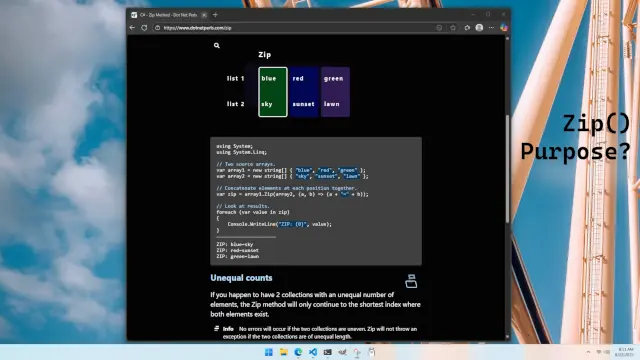Understanding Zip Iterators
Sometimes it is useful to think deeply about a function that can be found in many programming languages. There must be some reason the function is found in so many places, right? Consider the zip function—it receives two iterators, and returns an element from each, on each call.

I have never used zip much, and I wondered what it might be good for. Am I missing something? In languages like C# it is part of System.Linq as Zip, and in Python and Rust it is zip.
Think of a program that has two arrays, and modifies one of the arrays—so we end up with a before-array, and an after-array. Then, we could call zip and iterate over both arrays at once. In each iteration, we could see if the before-element equals the after-element. This would eliminate the need to use indexes to iterate over both arrays at once.
So zip has a couple benefits—it lets us enforce some logic that two arrays are similar enough that they can be "zipped" together. And then we can avoid using indexes to access elements in each array. It does seem like a small improvement over not using zip—and I can see why so many languages might include a zip function. For code samples, this site has articles about zip for C# and Python.